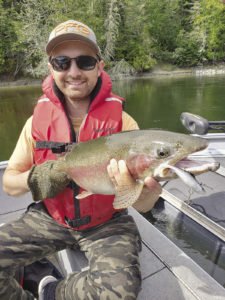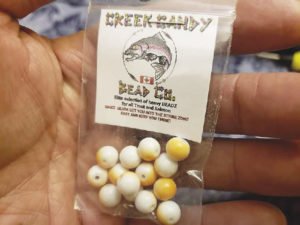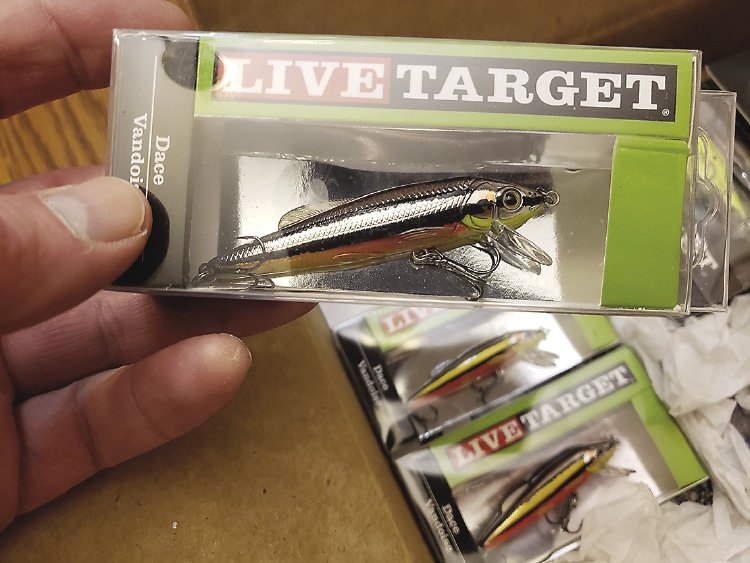As long as there have been anglers, there has been a desire to improve the lures and tackle used to catch fish. This has lead to some truly imaginative lures, and to some stuff that maybe went a bit too far. I have always been fascinated by the idea of some angler looking at your garden variety kitchen spoon, and thinking “Hey, if I cut off the handle, and put on a hook, this could be good for catching fish!” The sheer creativity of that—and the simplicity of it—has stood the test of time.
Then there are the lures that were also imaginative, but perhaps lacked something in delivery. Some of you may remember the hollow glass tube lures marketed in outdoor magazines many years ago. The idea was to put a live minnow, worm or nymph inside the tube and fish with this “live bait” lure. Needless to say, there were multiple problems with this approach, not the least of which was the live bait rarely stayed that way for long in a tiny, enclosed tube. Points for ingenuity, though. This year, the lures and baits available for anglers are better than ever. Here are a few of the tackle trends happening in the fishing world.
Ultra-realistic Crankbaits

Crankbaits are not new and they have been a go-to for North American anglers since the Rapala minnow made its way from Finland in the early 1960s. However, the paint and finish of the modern crankbait is worlds away from the original lures that used foil to mimic the silver flash of a live shiner. Many of today’s crankbaits are so realistic, a passing glance could make you think you were looking at the real thing. The Live Target company has been at the forefront of this trend. The company has gone the extra mile to make the lures they sell look like actual fish. The detail is painstaking, and they look dynamite in the water. The smelt and redbelly dace cranks this company makes are must-haves for salmon and brook trout respectively.
Paddletail Swimbaits
Plastic baits have been a huge thing for quite a while, with the most popular options being the twister, tube and minnow/shadbaits. You really can’t go wrong with any of those. However, a decidedly old school lure has made a roaring comeback and they are definitely going to be found in every tackle store this year. The paddle tail swimbait is really just a slightly more refined version of the Vibrotail minnow my Grandfather used 40 years ago. The difference now is the softer and more realistic looking plastic coupled with things like holographic eyes. The key to the paddle tail swimbait is the minnow-shaped body coupled with a tightly wiggling paddle tail. You can fish the paddle tail a variety of ways, but they really shine when cast out and then retrieved straight back in. The paddle tail generally is the most effective when not fished erratically; which is not to say that won’t work, as it will. But my experience has been the less angler-imparted action, the better.
Beads
At first glance, a plain bead does not look very sexy above a fish hook. It’s no spoon, spinner, swimbait or jig. Beads are generally small, relatively plain and have no inherent action. Sure, when you put a bunch of beads in a row behind a spinner, it’s a whole different ball game. Then beads look like fish jewelry.

A single bead is more subtle. In the world of steelhead fishing, there is no hotter presentation than a single bead that’s dead drifted in current or hung under a float. The variety of colour beads available is impressive, with everything from hot pink to opaque pearl. The key to beads seems to be the size and translucent nature of them in water. Beads also carry in current in a very realistic way, moving like a single egg would that had become dislodged from gravel. Plastic beads are buoyant, light and will float higher off the bottom. Glass beads will sink, but can be effective suspended under floats or when fished with floating fly line in fast but shallow water. The bead is normally pegged with a bobber stop an inch or two above the hook, and some anglers will fish two beads in tandem, or with a nymph on a dropper.
Beads can even be used for live bait walleye fishing. I’ve had great success running a chartreuse, red or glow bead in front of a minnow or nightcrawler. The bead adds a little colour and attraction, and if you are using a plastic bead, there is added buoyancy. Companies like Creek Candy Beads have a jaw dropping array of beads for every possible type of presentation.
Try some of these new tackle trends this season and find out what all the fuss is about.




